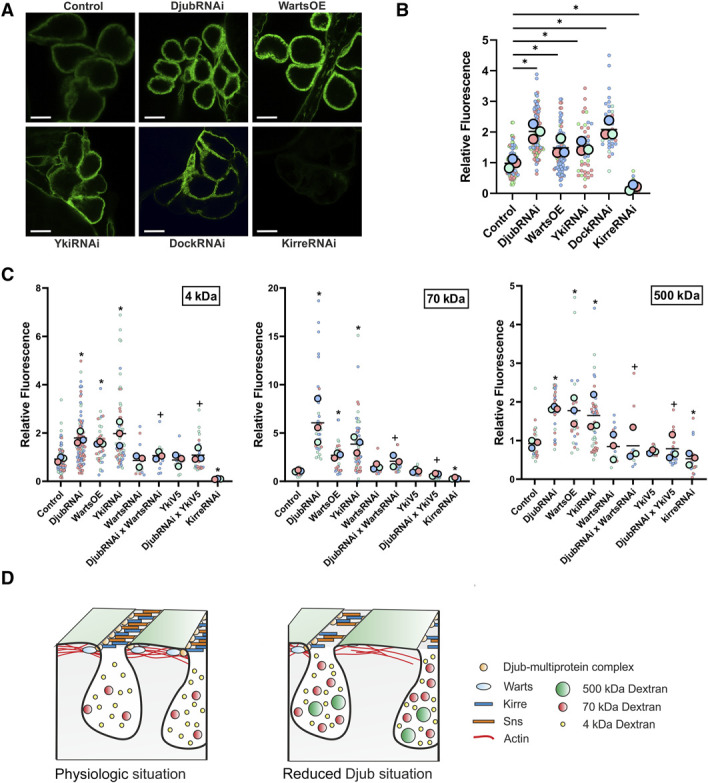Figure 6.

SD permeability increases because of loss of Djub and Hippo pathway activation. (A) Uptake assays with FITC-BSA (1 mg/ml, 1 minute incubation) at RT show increased FITC signal within the lacunae of the nephrocytes with Djub, Yki, or Dock knockdown (DjubRNAi, YkiRNAi, DockRNAi) and Warts overexpression while Kirre knockdown prevents uptake of FITC-BSA nearly completely. (B) Quantification of BSA uptake as shown in (A) confirms this observation (n>60). (C) Measurement of the uptake efficiency of FITC-dextran with molecular sizes of 4, 70, and 500 kDa. Djub or Yki knockdown (DjubRNAi, YkiRNAi) and WartsOE increase the uptake of all three FITC-dextrans. Enhancement of uptake efficiency is strongest for 70 kDa dextran. Simultaneous Warts knockdown (DjubRNAi×WartsRNAi) or Yki-V5 overexpression (DjubRNAi×YkiV5) rescues this effect. Kirre knockdown (KirreRNAi) shows almost no uptake of FITC-dextran (n>20). (D) Scheme: Under physiologic conditions, the SD proteins Sns and Kirre form a filtration barrier with a cutoff size of approximately 70 kDa, covering the nephrocytes labyrinthine channels. Djub as part of a multiprotein complex is localized at the SD and recruits Warts to SDs, which ensures Hippo pathway inactivity. A loss of Djub destabilizes the SD complex, which leads to fewer functional SDs and an increased permeability. Activation of the Hippo pathway enhances this effect. *P < 0.05 compared with control, +P < 0.05 compared with DjubRNAi. Figure 6 can be viewed in color online at www.jasn.org.
